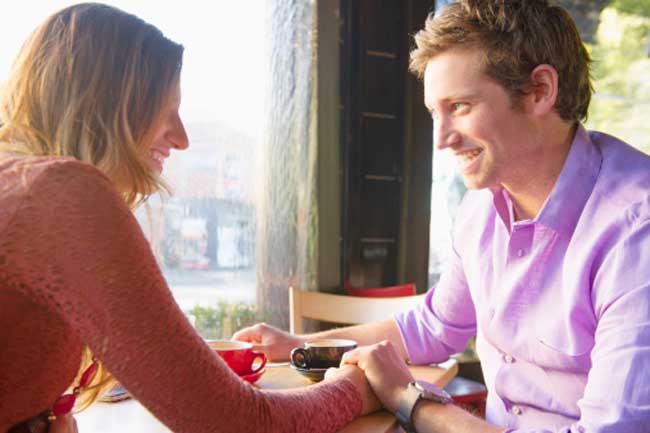गुस्सा किसी भी रिश्ते का सबसे बड़ा दुश्मन है। अगर आपकी गर्लफ्रेंड गुस्से में है, तो शांत किया जाना जरूरी है। लेकिन, इसका एक तरीका होता है। और अगर यह तरीका सही न हो, तो बात बनने के बजाय बिगड़ भी सकती है। जानिये कैसे आप अनी गर्लफ्रेंड के गुस्से को शांत कर सकते हैं।
1.गुस्सा है विनाश की जड़
गुस्सा रिश्तों में समस्याओं की जड़ होता है। यह गुस्सा ही न जाने कितने रिश्तों को समाप्त कर देता है। किसी रिलेशनशिप में होना आपको बहुत खुशी देता है। यह आपको खास होने का अहसास कराता है। लेकिन, एक जरा सी बहसया फिर लापरवाही गुस्से का कारण बनती है। गुस्से का असर पलटा नहीं जा सकता। गुस्सा हर किसी को आता है, लेकिन सही समय पर उसे कंट्रोल करना या उसके असर को नियंत्रित करना बहुत जरूरी होता है। प्यार भरे रिश्ते को खत्म करने के लिए गुस्से का एक पल ही काफी होता है।
2.रिश्ते पर असर
कई रिश्ते अकसर गुस्से की भेंट चढ़ जाते हैं। आप गुस्से को काबू तो करना चाहते हैं, लेकिन आपको यह नहीं मालूम होता कि आखिर ऐसा किया कैसेट जाए। कई बार अपना गुस्सा काबू करना तो आसान होता है, लेकिन अपने साथी के गुस्से के बारे में आप क्या करेंगे। गुस्सा एक आग की तरह होता है। यह प्यार और मधुर रिश्तों को जलाकर रख देता है। आपको अपने गुस्से को काबू करने की जरूरत होती है। बाद में आपके हाथ में केवल पछतावा रह जाता है। तो जानिये कैसे आप अपनी साथी के गुस्से को नियंत्रित कर सकते हैं।
लड़कों के लिए एकतरफा प्यार के दर्द से उबरना थोड़ा मुश्किल होता है लेकिन नामुमकिन नहीं। आइए जानें एकतरफा प्यार को कैसे हैंडल करें। यहा क्लीक करे
3.उसे प्यार करें
प्यार से बड़ी कोई दवा नहीं। बेशक गुस्से की कोई दवा नहीं होती, लेकिन इसे नियंत्रित तो किया ही जा सकता है। अगर आप चाहते हैं कि आपकी गर्लफ्रेंड शांत रहे तो उसे जी भर कर प्यार दें।

4.उसे समझें
समझदारी के बिना कोई भी रिश्ता पनप नहीं सकता। अगर आप अपनी गर्लफ्रेंड को जानते-समझते हैं तो आपके लिए उसके गुस्से को काबू करना आसान होगा। सबसे पहले गुस्से का कारण समझें। कुछ लोगों के लिए गुस्सा अपनी भावनाओं को अभिव्यक्त करने का तरीका होता है। वहीं कुछ लोग गुस्से में प्रतिक्रिया देते हैं। बॉयफ्रेंड होने के नाते यह आपकी जिम्मेदारी है कि आप अपनी गर्लफ्रेंड के स्वभाव को समझें। अगर उसे हर बात पर गुस्सा आता हो, तो समझ जाइये कि उसे गुस्से की समस्या है।
5.जानने के हैं फायदे
उसके गुस्से का कारण समझने के बाद आपकी राह आसान हो जाएगी। ज्यादातर मौकों पर देखा गया है कि बॉयफ्रेंड अपनी गर्लफ्रेंड के गुस्से का कारण समझे बगैर उससे बहस करता रहता है। और फिर उसकी शिकायत होती है कि उसकी गर्लफ्रेंड गुस्सा बहुत करती है। आपको एक समझदार और जिम्मेदार पुरुष की तरह व्यवहार करना चाहिये। गुस्से के कारण की जड़ को जानने का प्रयास करें, और उसके बाद ही अपना व्यवहार तय करें।

6.उसकी सुनें
प्रतिक्रिया देने से पहले उसकी बातों को सुनें। बिना उसकी बातों को सुनें आप प्रतिक्रिया न दें। गुस्से में इनसान की तर्कशक्ति समाप्त हो जाती है। जब वह गुस्से में हो, तो उससे तर्क आधारित बात करना बेमानी है। सुनें कि आखिर वह कह क्या रही हे। लड़कियों की सबसे सामान्य समस्या यह होती है कि उनके बॉयफ्रेंड के पास उनकी बात सुनने का वक्त ही नहीं होता। और कई बार यही उनके गुस्से की अहम वजह होता है। जब आप शांति से किसी क्रोधित व्यक्ति की बात सुनते हैं, तो आप उसकी समस्याओं को बेहतर समझ पाते हैं।

7.शांत रहें
किसी क्रोधित व्यक्ति से बात करते समय आपको शांत रहना चाहिये। यही सबसे अच्छा तरीका है। आग को आग से नहीं बुझाया जाता। आग बुझाने के लिए पानी की ही जरूरत होती है। जब वह आपको शांतचित्त होकर अपनी बात सुनते देखती है, तो उसे अहसास होता है कि गुस्सा करने की कोई जरूरत नहीं है।

8.उसे समझायें
क्रोधित व्यक्ति के साथ कोई नहीं रहना चाहता। गुस्सा संक्रमण की तरह फैलता है। एक समझदार और जिम्मेदार इनसान होने के नाते यह आपकी जिम्मेदारी बनती है कि शांति से उसकी बात सुनने और समझने के बाद आप अब उसे समझायें। लेकिन, इस बात का अच्छी तरह ध्यान रखें कि जब तक सामने वाला इनसान शांत न हो, उससे इस बारे में कोई भी बात न करें। गुस्से में अगर आप किसी व्यक्ति को समझायेंगे तो उसका कोई फायदा नहीं होगा। जब वह अपनी बात पूरी तरह समाप्त कर चुकी हो, तब आप उससे उस बारे में आराम से बात करें।

9.करनी कथनी से ज्यादा बोलती है
अपनी गुस्से से भरी गर्लफ्रेंड से बात करते समय आपका शांत रहना बहुत जरूरी है। आपको उसे यह समझाने की जरूरत है कि गुस्से से किसी का भला नहीं होता। और गुस्से को कभी भी सही नहीं ठहराया जा सकता। उसे बतायें कि आप उसे प्यार करते हैं और ऐसे में गुस्से की कोई जरूरत नहीं। जहां प्यार होता है, वहां गुस्से की कोई जगह नहीं। आप उसे बतायें कि अपनी बात समझाने के दूसरे तरीके भी हो सकते हैं।

10.इससे मिलेगी मदद
अगर आपकी गर्लफ्रेंड बहुत ज्यादा गुस्सा हो रही हो, तो आप उसे किसी रेस्तरां या किसी अन्य शांत स्थान पर ले जाएं। फिर प्यार से उसे थामें और उसे शांत करने की कोशिश करें। एक बार जब वह सामान्य हो जाए, तो उसे आंखें बंद कर पांच बार गहरी सांस लेने को कहें। उसे एक से दस तक गिनती गिनें। इससे वह शांत हो जाएगी और उसका गुस्सा काफूर हो जाएगा। संगीत भी उसे शांत करने में मदद करेगा।




















































